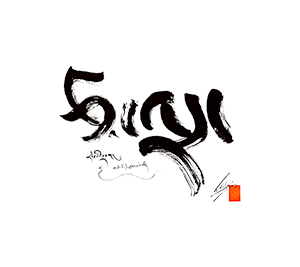Also known as the Dharmadhātustotra, it is a praise written in verse attributed to Nāgārjuna. A Sanskrit manuscript found in Tibet was recently published in 2015. However, before this it was only extant in Tibetan and Chinese translations, though fragments of this text were found to be quoted in other Sanskrit texts. It is notable as perhaps the only work of Nāgārjuna that takes a positivistic view of emptiness and the existence of wisdom, in this case represented by the dharmadhātu. In fact much of the language echoes descriptions of buddha-nature. Though modern scholarship has thus called the attribution of this text to Nāgārjuna into question based on its contents, Tibetan scholars have utilized the text as a support for works that promote or defend tathāgatagarbha and it is especially prominently featured in works on other-emptiness (gzhan stong) and Great Madhyamaka.
This Text on Adarsha - If it doesn't load here, refresh your browser.


